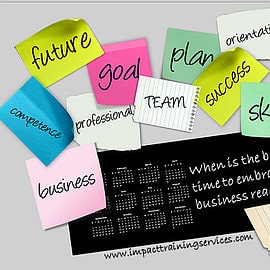Last Updated on April 1, 2024 by Lorna Barrow

I hate writing business plans.
First, because I have proven there’s something more important than a business plan that you should write.
Second, not because I don’t want to help you but because unless you have deep pockets, you seldom want to pay the price I am likely to ask.
And I don’t blame you.
Because a well-written business plan requires the writer (if it’s not you, the entrepreneur) to spend hours and hours getting inside your head. Even before they write a single word.
Not to mention the research, the data collection and the many versions before you’re happy with it.
But while I don’t write any, except for myself, over my business life, I’ve had to read many and I still do for my clients.
And I’ve sadly concluded that too many of them are not designed to attract investors and as you read on you will see why.
So I’m writing this post to show you some of the mistakes you make with writing business plans.
You know, the ones that really turn investors off and prevent you from raising the money for your dream business.
But before I do, let’s be sure what I mean by a business plan.
It’s a written plan that essentially captures what the business is about. Its highlights your goals over a specific period and how you will achieve them. It’s useful for a new business to attract investment and to help an existing one to manage itself.
Now, let’s get to those mistakes…
1. No early and clear indication of the purpose of the business
This is a pet peeve of mine. I am completely frustrated when you ask me to review a business plan and I’m at page 7 or even 10 and I’m still not sure what the business is about.
I usually insist that my clients state the purpose of the business in a simple, short sentence (YES!) and right at the beginning of the document.
You see, when you can do that, you demonstrate that you have incredible clarity on your business idea. When you are that clear, your potential investors are equally clear what they’re investing in.
2. Writing business plans that are incredibly boring

I am very aware that a business plan or a proposal is a serious document, After all, your entire future might be wrapped up in it. (Lean how to write a really awesome proposal here).
But what is your real purpose of writing business plans?
Well, the writers of most plans seem to have goals such as (a) bore the reader right into an early grave or (b) turn away likely investors.
If I am wrong, why the long, clumsy paragraphs? The tired catchphrases and jargon that suffocate most business writing? Why the often unrelated and complex financial models/data?
If the purpose of your business plan is to raise money, especially by attracting investors, then your document becomes a sales pitch.
Therefore, you need to engage the readers as much as and as far as possible, starting at the very beginning.
To show you what I mean, here’s the opening of a business plan that I wrote for a candy store I wanted to set up:
In the world of healthy lifestyles, there must be room for a little sweet indulgence. Sweet Connections was created especially to offer its customers such a treat.
Further in the document I stated:
It is “sweet connection” between candy, confectionery products, cakes, desserts, novelties and the creative design team of the business, dedicated to providing its customers with tantalising treats.
The interesting result was that this business plan was read and shared for the “sheer “novelty of the approach” back by well-researched data.” The final outcome was that I attracted funding from a source that was not on my radar in the first place.
Whoever writes your business plan, it should reflect the passion of an entrepreneur, boldly setting out on a mission to turn a dream into reality. Here is a post that will help you with your writing.
The descriptions should reflect your personality, knowledge and ideas, supported by relevant and accurate data. And it does not matter if your project is in IT, food, clothing or even pet grooming.
Remember:
Investors invest in people not businesses.
3. Vague, incomplete or scrappy CVs and profiles of the owners
You can almost consider this an extension of #2 above. I can’t stress this enough. People invest in people.
Even if you come highly recommended as a prospect, badly written CVs or profiles will not build the required trust.
Decent CVs matter whether you are a “solopreneur” working from home, part of an entrepreneurship couple or if you have a team going after big contracts.
Be honest and detailed about each member of your team. Vague statements such as “over the past 10 years, Lorna has worked in the fashion industry at a number of high-end houses across the country” will not impress.
I don’t know about you but I’m not sure what that means.
Here’s a secret though:
badly written profiles also tell a story about you… Just not the one you had in mind.
4. Requiring people to sign complex and highfaluting NDAs

Sigh…
This one always makes me unsure if to laugh or cry.
First, as part of my daily activities to keep my brain active, I challenge myself to come up with at least 5 ideas for businesses. Therefore, it’s just a matter of time before I come up with an idea similar to yours.
Second, there seems to be an inverse relationship between the complexity of the Non-Disclosure Agreement (NDA) and the scale of the project. The more complex the NDA, the simpler the project. You can actually download and use a simple NDA in PDF here. (My treat).
Third, by all means do what you can to protect your intellectual property. But please understand that NDAs are more a ritual than having any real practical value.
Fourth, this one cracks me right up! I am asked to sign an NDA BEFORE I can see your business idea. Therefore, you’re asking me to agree to not disclose that which I have not seen. Wuhloss!
Fifth, most investors roll their eyes and move to the next business plan when they are presented with NDAs for small, pedestrian projects.
5. Writing business plans that project too far into the future
We are living and doing business in a fast-paced, dynamic world.
The reality is, the premise on which your projections are based, could change even before you get an appointment with your bank manager.
Why then, would you be writing business plans for a small business, in its early stage, which projects 5 years down the road?
Anything beyond 12 – 18 months reaches into the realm of pure speculation. And I hate to have to tell you but 5 years from now, your industry might not even exist.
Furthermore, what is flawed about these long term projections is that they are based on increment percentage increases over the first year. This means that your business plan assumes all other conditions will remain unchanged. This is highly unlikely.
6. Financial models which are out of sync with the plan

Very briefly and simply, you can describe a financial model as a predictive model which is used to forecast the future performance of a business, using numbers.
As such, they provide business decision-makers with data-driven, quantitative assessments of where a company stands today and what its market and financial position will be in the future.
Therefore, you can understand their value as an item in a business plan.
But…Big BUT…
The model you use should match the size and complexity of the plan.
Here’s what I mean…
I once had to review a business plan for a small children’s store. When I got to the financials my eyes glazed over. Pages and pages of excel spreadsheets, three-quarters of which I did not even understand.
A simple three-statement model (income statement, balance sheet, cash flow) would have served their purpose so much better.
7. Writing business plans that rely on out-of-date support data
I’m not lying! And I’m offended that you’re calling me a liar!
Not to defend this but I truly understand how it happens…
So you believe you can’t and shouldn’t write a business plan for yourself. So you asked around and a particular name keeps coming up. You hear that he’s fast, knowledgeable and reasonable as price goes.
What you don’t know is what makes him “fast” and “reasonable”.
It could be that he’s too cheap, lazy or unprofessional to subscribe to the databases that would provide him with up-to-date and relevant data.
The result of this is that he could be using data as much as two years old!
Therefore, any predictions you make using data this obsolete will be unreliable and will turn off potential investors.
8. Not having enough of your own money invested in the project

Do you have enough of your own money in the business?
(For start-up businesses) all loan programs require that the business owner put some amount of their own money in the business.
This owner equity injection shows that you believe in the business enough to risk your own money.
Some programs may require you to put in only 10% owner equity. Others could require up to 30%.
Whatever the amount, lenders or investors will look more favorably on a finance request, the more equity you are willing to put in the business. Oh! And they want to see it right there in the business plan.
And here’s a little secret…investors want to see you having a decent amount of your own money in the plan. This gives them comfort that you won’t give up too easily if your proposal hit challenges.
9. Advisors taking a disproportionate fee
One day, just in casual conversation, I asked a friend and colleague of mine, “How much do you charge for working with clients on business plans?”
She replied that her fee is usually X% of the money the client is able to raise with her plan.
While I said nothing to her, here’s what I want to say to you…
Investors don’t want to see any significant amount of their money going towards business plans writers and advisors.
This means that the advisors have to ask for a percentage that would be acceptable for investors but they (the advisor/writer) might not be happy with.
I know from experience this is where the fallout begins. Consider this scenario: you agree to 20% of the amount raised and $200,000 is raised. Suddenly $40,000 is a lot of money to pay out for that service. And the fighting starts.
I prefer (and so do investors and lenders) if you agree a cost for writing the business plan and place it in the expenditure statement.
10. No risk assessment and risk mitigating factors

Time and time again, I receive business plans to review that makes no mention of risk. Chewpse!
Risk can be defined as the chance of suffering or encountering harm or loss.
Given the nature of starting a business, risk must be one of the key factors you need to consider in your business plan.
No lending agency, bank or investor SHOULD put money in a start-up that the proposal does not identify the risk. (But some do!)
And I want to see more than the financial risk.
I want to see, the risks associated with the market, the industry, the location and of course the risk associated with investing in you.
And you can’t stop at identifying the risk. I also want to see your risk mitigating strategies. In other words, once you have identified the risks, what are you going to do to lessen the impact of those risks.
11. Writing business plans by the “pound”
Sometime ago, one of my clients, a lending organisation, asked me to review a business plan they had received. No surprise here, they had asked before…
But wait…A plan this thick to borrow that small amount of money?
When I started to read the plan, I realised what was going on.
The writer of the plan, realizing that the business idea was not a very good one in the first place, decided to bamboozle with fluff.
When I worked for a donor orgainsation, we called those “proposals/business plan by the pound”
Neither lenders nor investors are impressed with these types of plans, since they can hardly ever be approved.
You are better off asking for help with your business idea than submitting a business plan where its only merit is its weight. You can actually download the steps to research a business idea in PDF here. (My treat).
Your next “writing business plans that rock” steps?
They’re really simple.
- Become familiar with these 11 things that will cause you difficulty in having your business plan financed
2. Use them as a blueprint to evaluate any existing plans you have not yet submitted for funding.
3. Also use them as a blueprint to help you get a plan right the first time.
4. Share them with anyone you hire to write a business plan for you. Don’t let them intimidate you!
That’s it!
To your business plan writing success…




